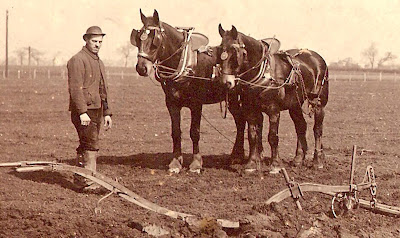 |
| The gravestone, the parish church yard, 1979 |
Of the eight, only one reached the age of 18 with other seven dying between the ages of 2 months and one year and a bit.
It is a powerful reminder of the level of infant mortality in the not so distant past and is one that I have used over the years to illustrate just how uncertain were the chances of surviving to the age of 5.
And while I had transcribed it and included it in stories and articles, I have never reproduced the original memorial stone or gone looking for the family.
But today I have done just that and it has been a slow process taking up a big part of a morning and even now I have not got very far.
I know that Mr Sharp was married three times, and that his wives were Elizabeth, Hannah, and Sarah.
His marriage to Hannah took place in what is now Manchester Cathedral in June 1834 and he married Sarah in 1851 in Ashton-Under-Lyne.
This third marriage was sometime between January and March, and in April they are recorded as living at 10 Old Cross which was close to the parish church. He described his occupation as “Hair dresser and seedsman”, which chimes in with an earlier reference in 1828 to him in a directory as living on Old Street and earning a living as a “seedsman”.
In 1861 they had moved to the small village of Hotham where he continued to describe himself as a “seedsman” but also as a “Lodge Gate Keeper”.*
 |
| The children |
As it is, the death of Thomas aged 18 in 1839 might offer a clue as to his father’s marriage to Elizabeth which must be sometime at the start of the 1820s if not earlier.
I doubt we will ever know why Charles and Sarah moved to Yorkshire.
 |
| Places the Sharp's would have known, Ashton-Under-Lyne, 1854 |
By comparison, Hotham in 1825 contained just 62 houses and 203 inhabitants, which by 2011 had only grown to 233.**
Of course there is that darker and sadder explanation which falls back on the need to move away from such a litany of tragedy.
Location Ashton-Under-Lyne
Picture; the gravestone of the Sharp family, 1979, parish church, Ashton-Under-Lyne, from the collection of Andrew Simpson, and Old Ssquare, close to where the Sharp's lived, from the OS, Lancashire, 1854, courtesy of Digital Archives Association, http://digitalarchives.co.uk/
*Pigots Directory, 1828, Census Enu 1s 2 Ashton-Under-Lyne, Hotham Yorkshire, 1861, page 214
**A Topographical Dictionary of the United Kingdom, Benjamin Pitts Capper, 1825, page 432























.jpeg)









.jpg)















